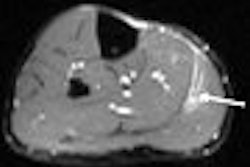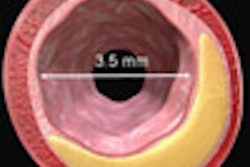Lesion-directed prostate biopsies yield higher cancer detection rates than random biopsies, according to a five-year study published in the latest edition of the Journal of Ultrasound in Medicine.
"Our data show that the cancer detection rate of lesion-directed biopsy is superior to that of random biopsy, regardless of the PSA (prostate-specific antigen) level, indicating the importance of developing skills for recognizing morphologically suspicious lesions on sonography," wrote a research team led by Dr. Shih-Kai Lan of the Buddhist Tzu Chi Dalin General Hospital in Chia-Yi, Taiwan.
To compare sonographically suspicious lesion-directed biopsies and random biopsies, the researchers studied 518 patients referred for prostate biopsies between 1998 and 2002. The patients were referred for biopsies due to an elevated PSA level, abnormal digital rectal examination (DRE) findings, or incidental morphologically suspicious lesions on sonography (JUM, January 2007, Vol. 26:1, pp. 11-17).
Transrectal ultrasound (TRUS) was performed using a 1486 ultrasound scanner (B-K Medical, Herlev, Denmark). Morphologically cancer-suspicious lesions were determined by comparing the two transverse halves of the prostate for asymmetry, hypoechoic areas, or heterogeneous echogenic areas, and confirming these in the longitudinal plane, according to the researchers.
Of the 518 patients, 380 were found to have at least one tumor-suspicious lesion and underwent lesion-directed biopsy at its transverse half. Each of these biopsies included three to five biopsy cores within or adjacent to the lesion. For the remainder of the patients, three biopsy cores were randomly taken from the contralateral half of the prostate gland.
In the total patient group, 959 results were obtained from 439 random and 520 lesion-directed biopsies; cancer was found in 207 (40.7%) of the patients. Patients with cancer who had PSA levels of 10.0 ng/mL or greater had higher proportions of bilateral cancer lesions than those with PSA levels of less than 10 ng/mL (p = 0.03).
Of the 439 normal-appearing halves taken by random biopsy, 110 (25.1%) were tumor-positive, compared with 200 (38.5%) of the 520 biopsies taken from halves with sonographically suspicious lesions. Patients with PSA levels of 10 ng/mL or greater had higher positive malignancy rates, regardless of the biopsy approach, than those with PSA levels less than 10.0 ng/mL (p < 0.001).
In about 40 patients, a diagnosis was made by random biopsy from halves that were morphologically normal on sonography, not by lesion-directed biopsy from tumor-suspicious contralateral halves, according to the researchers.
Lesion-directed biopsy is superior to random biopsies, regardless of PSA level, they concluded.
"Moreover, in some patients, prostate cancer was diagnosed from a sonographically normal-appearing half, whereas contralateral cancer-suspicious lesions were histologically benign," the authors added. "Therefore, routine contralateral random biopsy is required for patients with unilateral suspicious lesions. To increase detection of prostate cancer, a higher number of biopsy cores may be required for patients with PSA levels of less than 10.0 ng/mL."
The researchers said their results also showed that DRE plays a limited role in the early detection of prostate cancer.
By Erik L. Ridley
AuntMinnie.com staff writer
January 11, 2007
Related Reading
Microflow imaging may boost prostate biopsy yield, December 21, 2006
Men with localized prostate cancer benefit from definitive treatment, December 18, 2006
Localized prostate cancer treatment lowers mortality in elderly men, December 13, 2006
Breast cancer family history raises prostate cancer risk in African Americans, December 13, 2006
Dynamic contrast-enhanced magnetic resonance helps spot prostate cancer, November 14, 2006
Copyright © 2007 AuntMinnie.com




















